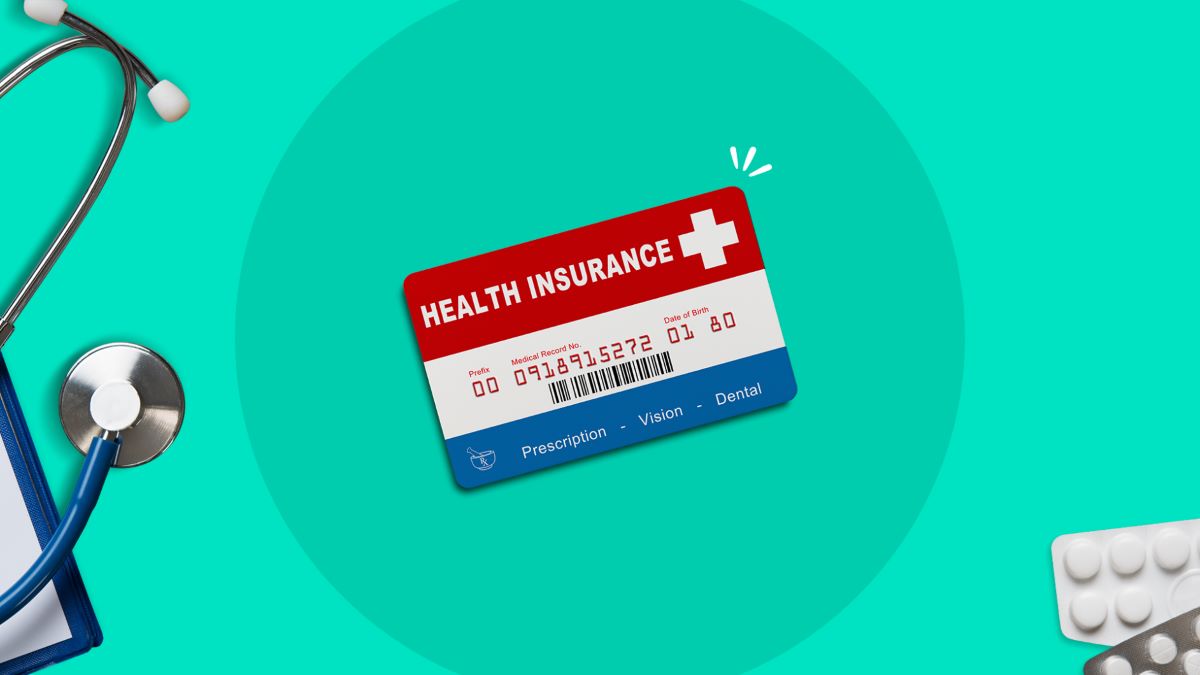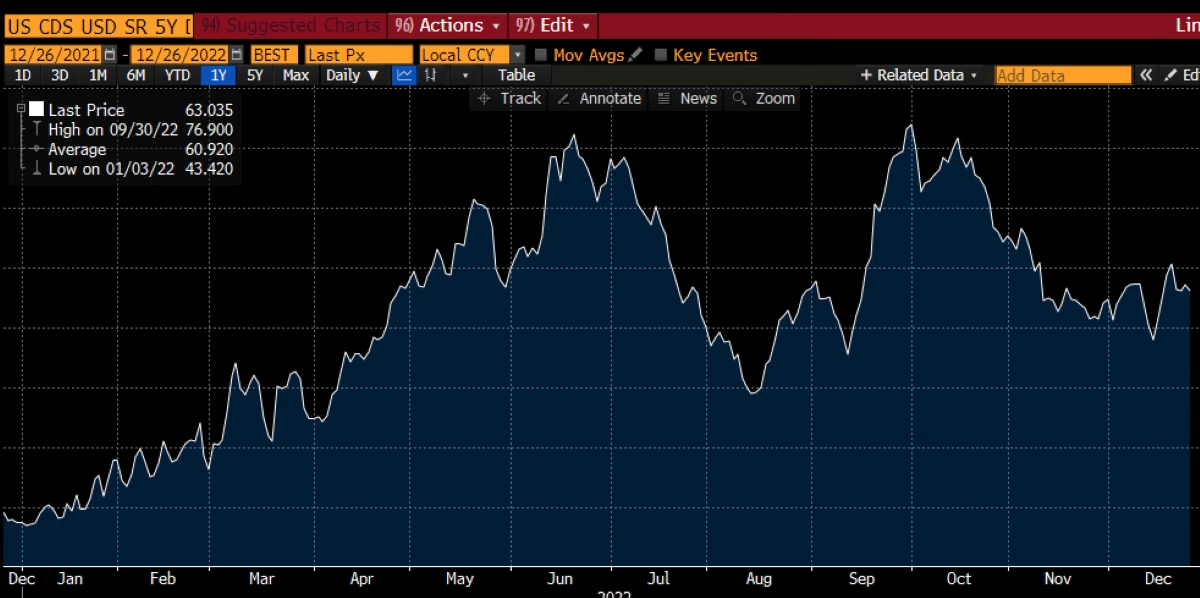Home>Finance>What Is The Annual Maximum For Dental Insurance?


Finance
What Is The Annual Maximum For Dental Insurance?
Modified: December 30, 2023
Learn about the annual maximum for dental insurance and how it can impact your finances. Find out what coverage limits you should expect from your dental plan.
(Many of the links in this article redirect to a specific reviewed product. Your purchase of these products through affiliate links helps to generate commission for LiveWell, at no extra cost. Learn more)
Table of Contents
- Introduction
- Understanding Dental Insurance Coverage
- What is the Annual Maximum?
- Importance of the Annual Maximum in Dental Insurance
- Factors that Affect the Annual Maximum
- How Does the Annual Maximum Work?
- Exceeding the Annual Maximum
- Strategies to Maximize Dental Insurance Benefits
- Choosing the Right Dental Insurance Plan
- Conclusion
Introduction
Dental insurance is an essential aspect of maintaining good oral health and managing the costs of dental care. It provides coverage for a range of dental procedures, including preventive care, fillings, extractions, and even major dental treatments such as crowns and bridges. Understanding how dental insurance works and its specific terms and conditions is crucial for maximizing your benefits.
One key element of dental insurance that often comes up in discussions is the annual maximum. The annual maximum is the maximum amount of money that your dental insurance plan will pay for dental procedures within a year. It is important to understand the annual maximum and its implications to make the most of your dental insurance coverage.
In this article, we will delve deeper into the concept of the annual maximum in dental insurance. We will discuss what the annual maximum is, its importance, factors that affect it, how it works, and strategies to maximize your dental insurance benefits. Additionally, we will provide guidance on choosing the right dental insurance plan to suit your needs and budget.
Understanding the annual maximum and how it impacts your dental insurance coverage will help you plan your oral healthcare better and make informed decisions when it comes to dental treatments. So, let’s begin by understanding the basics of dental insurance coverage.
Understanding Dental Insurance Coverage
Dental insurance coverage varies from one plan to another, but generally, it includes a range of services categorized into three main types: preventive, basic, and major. Preventive services typically include routine check-ups, cleanings, and X-rays, aimed at preventing dental issues. Basic services cover common procedures such as fillings and extractions. Major services involve more complex treatments like crowns, bridges, and root canals.
Most dental insurance plans have a coverage percentage for each category. For example, preventive services may be covered at 100%, basic services at 80%, and major services at 50%. This means that the insurance plan will pay the specified percentage of the cost, and you will be responsible for paying the remaining percentage as a copayment or coinsurance.
In addition to the coverage percentages, dental insurance plans often come with certain limitations and exclusions. Limitations may include the frequency of certain procedures or waiting periods before coverage begins for specific services. Exclusions refer to services or treatments that are not covered by the insurance plan.
It’s important to carefully review your dental insurance policy to understand the specific coverage details, limitations, and exclusions. This will help you make informed decisions about your dental care and avoid any surprises when it comes to billing or coverage.
Now that we have a basic understanding of dental insurance coverage, let’s delve into the concept of the annual maximum and its significance.
What is the Annual Maximum?
The annual maximum is a crucial component of dental insurance coverage. It refers to the maximum amount of money that your dental insurance plan will pay for dental procedures within a calendar year. Once you reach the annual maximum, you will be responsible for covering any additional dental costs out of pocket.
The annual maximum is typically set at a specific dollar amount, which can vary depending on the dental insurance plan you have. Common annual maximum amounts range from $1,000 to $2,000, although some plans may have higher or lower limits.
It’s important to note that the annual maximum applies to each insured individual separately. For example, if you have a family dental insurance plan that covers you and your dependents, each person will have their own annual maximum. This means that the total amount of coverage for the entire family may be higher than the individual annual maximum.
The purpose of the annual maximum is to limit the financial liability of the dental insurance provider while ensuring that you, as the insured individual, receive essential dental care. It helps to balance the cost of dental treatments while providing you with a certain level of coverage throughout the year.
Now that we know what the annual maximum is, let’s explore why it is important in dental insurance.
Importance of the Annual Maximum in Dental Insurance
The annual maximum plays a vital role in dental insurance as it helps determine the extent of coverage you will receive for dental procedures within a year. Understanding its importance is key to maximizing your dental insurance benefits. Here are a few reasons why the annual maximum is significant:
1. Budgeting and Financial Planning: The annual maximum provides a clear guideline for budgeting your dental expenses. By knowing the maximum amount that your insurance will cover, you can plan your dental treatments accordingly and allocate your financial resources effectively. This ensures that you make the most of your dental insurance coverage and avoid any unexpected financial burdens.
2. Managing Costs: Dental treatments can be expensive, especially for major procedures. The annual maximum helps you manage the costs by setting a limit on the amount your insurance plan will pay. Once you reach the maximum, you are responsible for covering any remaining dental expenses. Understanding this limit allows you to prioritize your treatments or spread them out across multiple years to make the most of your coverage.
3. Encourages Regular Dental Care: Dental insurance aims to promote preventive care and maintain oral health. The annual maximum incentivizes regular dental check-ups, cleanings, and other preventive treatments. By utilizing your coverage for preventive services, you can help prevent the development of costly dental issues in the long run.
4. Flexibility and Freedom of Choice: Knowing the annual maximum allows you the freedom to choose the treatments that best suit your needs and preferences. If you have reached or are approaching the annual maximum, you can decide whether to delay non-essential treatments or opt for alternative, more cost-effective options.
5. Understanding Insurance Coverage: The annual maximum serves as a reminder to review your dental insurance policy and understand its terms and conditions. By being aware of the coverage limits and any potential changes, you can make well-informed decisions regarding your dental care and avoid any surprises or misunderstandings.
Dental insurance can be complex, and the annual maximum is an essential factor to consider. It affects your ability to receive necessary dental treatments within a given year while managing costs effectively. By understanding its importance, you can navigate your dental insurance coverage more successfully and make informed decisions about your oral healthcare.
Factors that Affect the Annual Maximum
The annual maximum in dental insurance is not a fixed amount for all plans or individuals. Several factors can affect the exact amount set as the annual maximum. Understanding these factors will give you insight into how your dental insurance coverage is determined. Here are some key factors that can influence the annual maximum:
1. Insurance Plan: Different dental insurance plans have varying annual maximum limits. Some plans may offer higher coverage limits, while others may have lower limits. The type of plan you have, such as an individual plan or a family plan, can also impact the annual maximum.
2. Insurance Provider: Each insurance provider may have its own guidelines and policies regarding the annual maximum. Factors such as the size and reach of the insurance company, regional differences, and market competition can influence the maximum amount they set for coverage.
3. Premium Costs: The amount you pay for your dental insurance premium can also affect the annual maximum. In some cases, plans with higher premium costs may provide more extensive coverage and a higher annual maximum.
4. Plan Type and Coverage Level: The type of dental plan you have, such as a PPO (Preferred Provider Organization) or an HMO (Health Maintenance Organization), can impact the annual maximum. Additionally, the coverage level within your plan, such as basic or comprehensive, can also affect the maximum amount.
5. Employer Contributions: If you have dental insurance through your employer, their contribution towards the plan can affect the annual maximum. Employers often negotiate specific coverage amounts with insurance providers, which can impact the level of coverage available.
6. Geographic Location: The annual maximum may vary based on your geographical location. The cost of living and average dental fees can differ between regions, which can influence the maximum amount set by insurance providers.
It’s important to review the specific terms and conditions of your dental insurance policy to understand how these factors impact your annual maximum. By being aware of the variables that affect your coverage, you can better plan your dental treatments and maximize your insurance benefits.
How Does the Annual Maximum Work?
The annual maximum in dental insurance works by setting a limit on the amount of coverage you can receive for dental procedures within a calendar year. Once you reach this maximum, you become responsible for paying any additional dental expenses out of pocket. Here’s how the annual maximum works:
1. Coverage Accumulation: At the beginning of the calendar year, your annual maximum resets to its full amount. As you receive dental treatments throughout the year, the insurance plan keeps track of the costs and subtracts them from the annual maximum.
2. Cost Calculation: The costs of dental procedures are typically based on the fee schedule determined by your dental insurance plan. Each procedure has a predetermined cost, which is subtracted from the annual maximum when the treatment is completed.
3. Tracking Progress: Insurance providers typically provide periodic statements or online portals that allow you to track your remaining annual maximum. It’s important to keep an eye on your usage and know how much coverage you have left as the year progresses.
4. Out-of-Pocket Expenses: Once you reach your annual maximum, any further dental treatments will require you to pay out of pocket. The insurance plan will no longer provide coverage for those procedures until the start of the next calendar year when the annual maximum resets.
5. Carryover or Rollover Options: Some dental insurance plans may offer carryover or rollover options for the unused portion of the annual maximum. This means that if you didn’t utilize your full coverage in one year, you may be able to carry over a portion of the remaining amount to the next year, giving you additional coverage.
It’s important to note that the annual maximum only applies to covered procedures within your dental insurance plan. If a treatment is not covered or falls under the plan’s exclusions, it won’t affect your annual maximum but may require you to pay for it separately.
Understanding how the annual maximum works is crucial for effectively managing your dental expenses and maximizing your insurance benefits. By tracking your usage and planning your treatments accordingly, you can make the most of your coverage while staying within the limits set by your dental insurance plan.
Exceeding the Annual Maximum
Exceeding the annual maximum in dental insurance means that you have reached the maximum coverage limit set by your insurance plan for a calendar year. Once you exceed the annual maximum, you become responsible for paying any additional dental expenses out of pocket. Here’s what you need to know about exceeding the annual maximum:
1. Financial Responsibility: When you exceed the annual maximum, you will be responsible for covering the full cost of any dental procedures that you undergo for the remainder of the calendar year. This includes copayments, coinsurance, and any charges beyond what your insurance plan covers.
2. Prioritization of Treatments: If you anticipate exceeding your annual maximum, it is crucial to prioritize essential dental treatments. Focus on necessary procedures to maintain your oral health and postpone non-urgent treatments until the following year, when your coverage resets.
3. Cost Considerations: Exceeding the annual maximum can lead to unexpected out-of-pocket expenses. Before undergoing any treatments, discuss the estimated costs with your dental care provider. This will help you make informed decisions and prepare financially.
4. Evaluate Supplemental Coverage: Some individuals may opt for supplemental dental insurance plans to provide additional coverage beyond the annual maximum. These plans can help mitigate the financial burden of exceeding the limit, but it is essential to carefully review the policy terms and coverage details.
5. Utilize Flexible Spending Accounts (FSAs) or Health Savings Accounts (HSAs): If you have an FSA or HSA, consider using these funds to cover the out-of-pocket expenses incurred once you exceed the annual maximum. FSAs and HSAs allow individuals to set aside pre-tax dollars specifically for medical and dental expenses.
6. Communication with Dental Insurance Provider: If you anticipate exceeding the annual maximum, it is advisable to communicate with your dental insurance provider. They can provide guidance on available options, such as discounted rates or payment plans, to help manage the financial impact.
7. Plan Renewal or Effective Dates: In some cases, if your dental insurance plan renews mid-year or has a different effective date, it could result in a new annual maximum during the same calendar year. It is important to confirm the renewal or effective dates of your plan to understand the implications on your coverage.
Exceeding the annual maximum can be an unexpected and costly situation. By understanding the potential ramifications and taking proactive measures, such as prioritizing treatments and exploring supplemental coverage options, you can navigate the situation effectively and make informed decisions about your dental care.
Strategies to Maximize Dental Insurance Benefits
Maximizing your dental insurance benefits involves utilizing your coverage effectively to receive the necessary dental treatments while minimizing out-of-pocket expenses. Here are some strategies to help you make the most of your dental insurance:
1. Understand Your Coverage: Familiarize yourself with the details of your dental insurance policy. Understand the coverage percentages, annual maximum, deductibles, and any limitations or exclusions. This knowledge will help you plan your treatments accordingly.
2. Schedule Preventive Care: Take advantage of the coverage provided for preventive treatments such as regular check-ups, cleanings, and X-rays. These services are often covered at a higher percentage, if not 100%, and can help detect and address dental issues early on, potentially saving you from more costly procedures in the future.
3. Plan Comprehensive Treatments: If you require more extensive dental treatments, such as multiple fillings or a crown and bridge, strategically plan them within a single calendar year. By bundling treatments, you can optimize your coverage and reduce the chance of exceeding the annual maximum.
4. Coordinate with Your Dentist: Discuss your treatment plans and coverage with your dentist. They can help schedule treatments based on your insurance benefits, ensuring the most cost-effective utilization while addressing your dental needs.
5. Utilize Waiting Periods: Some dental insurance plans have waiting periods for certain procedures. Instead of delaying necessary treatments, consider scheduling other covered treatments during the waiting period to maximize your coverage.
6. Explore Alternate Treatments: If a specific treatment recommended by your dentist is not covered or exceeds your annual maximum, consider asking for alternative treatment options that are covered. Your dentist can work with you to find suitable alternatives that align with your coverage.
7. Use Flexible Spending Accounts (FSAs) or Health Savings Accounts (HSAs): If available, contribute to an FSA or HSA to set aside pre-tax dollars for dental expenses. These funds can be used to cover out-of-pocket costs that exceed your insurance coverage.
8. Stay In-Network: If your dental insurance plan has a network of preferred providers, try to seek treatment from dentists within the network. In-network providers often have pre-negotiated rates with the insurance company, resulting in lower out-of-pocket expenses.
9. Regularly Review and Update Your Coverage: As your dental needs change, review your dental insurance plan annually. Consider whether your current plan still meets your requirements and explore other options that may provide better coverage or fit your evolving dental needs.
By implementing these strategies, you can maximize the benefits offered by your dental insurance plan. Remember to stay informed, plan ahead, and work closely with your dentist to make the most cost-effective decisions regarding your oral health.
Choosing the Right Dental Insurance Plan
Choosing the right dental insurance plan is essential to ensure that you have suitable coverage for your dental needs while managing costs effectively. Here are some factors to consider when selecting a dental insurance plan:
1. Coverage Levels: Evaluate the coverage levels offered by different plans. Consider the percentages covered for preventive, basic, and major dental services. Look for plans with higher coverage percentages to reduce out-of-pocket expenses.
2. Annual Maximum: Review the annual maximum amount offered by each plan. Determine if the limit aligns with your expected dental expenses and treatment needs. If you anticipate requiring extensive procedures, a higher annual maximum can be beneficial.
3. Network of Dentists: Check if the dental insurance plan has a preferred network of dentists. In-network providers often offer discounted rates, resulting in lower out-of-pocket expenses for you. Consider the accessibility and quality of dentists within the network.
4. Waiting Periods: Some dental insurance plans have waiting periods before coverage begins for certain services, typically for major procedures. If you anticipate needing immediate treatment, choose a plan with shorter waiting periods or no waiting periods for the services you require.
5. Deductibles and Copayments: Evaluate the deductibles and copayments associated with each plan. Consider the financial impact of these out-of-pocket costs and choose a plan with deductibles and copayments that are manageable for your budget.
6. Additional Coverage: Consider any additional coverage options available within the dental insurance plans. Some plans may offer orthodontic coverage for braces or coverage for cosmetic procedures if those are important to you.
7. Flexibility and Portability: Determine if the dental insurance plan allows you to choose your dentist or if you have flexibility to switch providers. If you anticipate relocating, assess if the plan is portable and allows seamless transition to a new area.
8. Cost-Benefit Analysis: Compare the premium costs of different dental insurance plans and evaluate the benefits provided. Assess the overall value of the plan by considering the coverage, annual maximum, and out-of-pocket costs to determine if it aligns with your expectations and budget.
9. Plan Reviews and Reputation: Research reviews and ratings of the dental insurance plans you are considering. Consider the satisfaction of current or past customers and the reputation of the insurance provider to ensure reliability and quality coverage.
Take your time to carefully evaluate and compare different dental insurance plans. Consider your oral health needs, budget, and preferences. By selecting the right dental insurance plan, you can have peace of mind knowing that your dental care will be covered and you can effectively manage your dental expenses.
Conclusion
Dental insurance plays a critical role in managing the costs of dental care and maintaining good oral health. Understanding the concept of the annual maximum is essential for maximizing your dental insurance benefits. The annual maximum sets the limit on the amount of coverage you can receive for dental procedures within a calendar year.
By understanding your dental insurance coverage, including the annual maximum, you can effectively plan your dental treatments, budget your expenses, and utilize your benefits to the fullest. Prioritizing preventive care, strategically scheduling treatments, and coordinating with your dentist are some strategies to make the most of your coverage.
Choosing the right dental insurance plan is equally important. Consider factors such as coverage levels, annual maximum, network of dentists, waiting periods, deductibles, and overall cost-benefit analysis when selecting a plan that fits your needs and budget.
While dental insurance provides financial assistance for dental treatments, it is crucial to be aware of the limitations, exclusions, and potential out-of-pocket expenses associated with exceeding the annual maximum. By staying informed and communicating with your insurance provider and dental care team, you can effectively navigate the complexities of dental insurance and make well-informed decisions for your oral health.
In conclusion, understanding the annual maximum, maximizing dental insurance benefits, and choosing the right dental insurance plan are all key elements in ensuring that you receive quality dental care while managing costs effectively. By utilizing these strategies, you can optimize your dental insurance coverage and prioritize your oral health for years to come.














